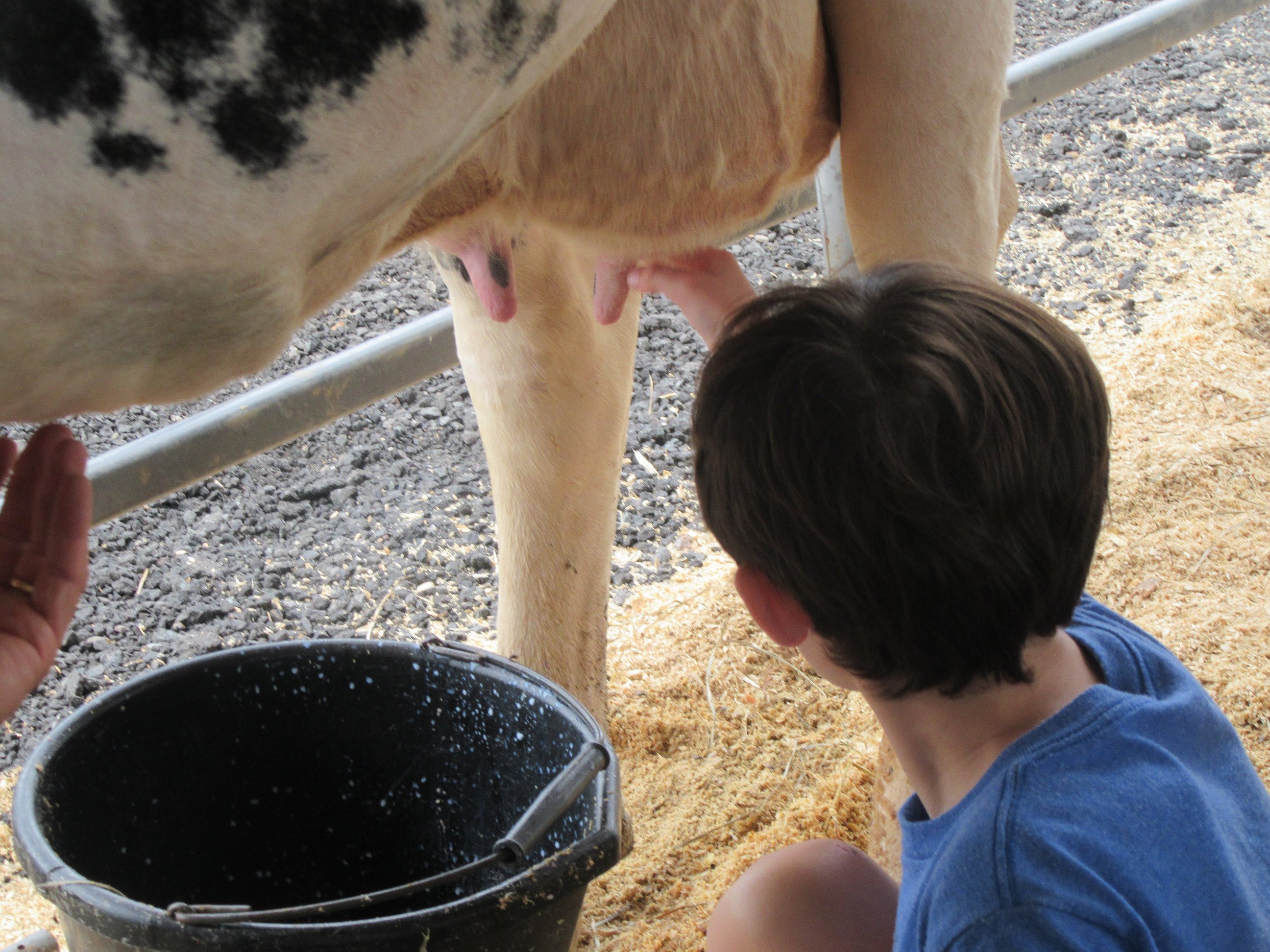Coping with traffic snarls, ever-sprawling development and debates about data centers and casinos, few Northern Virginians likely realize that agriculture is Virginia’s largest private industry with an economic impact of $82 billion a year.
From sweets to swine, from goats to grains, from milking to quilting, Virginia agriculture was on full display at the State Fair from Sept. 27 to Oct. 6 in Doswell, 23 miles north of Richmond. Over 200,000 visitors strolled around the Meadow Event Park gobbling up turkey legs, deep-fried oreos, blooming onions, corn dogs, pretzel-wrapped brats, raspberry honey and dill pickle fudge.
Fair-going engaged all the senses, sights like thousand-pound steers and 10-ounce ducklings, mooing cows
and squealing pigs. Enticing aromas of straw, sawdust, animal hides, fried chicken and cinnamon buns wafted across the fairgrounds.
Loving Livestock
In one pavilion, youngsters ages 16 to 19 participated in Senior Beef Showmanship, leading their steers calmly around a ring, positioning them just so and handling them gently with a show stick.
Ethan Randall from Page County, age 13, brought his 1,241-pound black crossbreed. “I’ve been raised up around them,” he said. “My cow is just like a puppy dog.”
Gracie Cooke from Madison County offered a running commentary on the Herefords and Simmental cattle in the showring. She has been showing cows since age five and now in her last year, lamented, “I’ve aged out of this contest.” Analyzing the muscling, frame and volume of the bovines, she explained that judges look favorably on whether the hair on the cow’s tail head is the same height as the bottom of the cow’s ear. The Farm Bureau awarded almost $100,000 in scholarships to the youngsters.
Around 1,000 head (animals) were entered each weekend, said Bill Bonwell with the Farm Bureau. Virginia has 1.3 million head of cattle.
In another pavilion, goat owners tenderly groomed their goats, a task they call “fitting,” by securing them on a stanchion, brushing their hair and moisturizing them with a spray. Youngsters led their goats, many of them Boer goats, with a halter, presented them, prodded them into a wide stance and held their noses up at an angle. It seemed like a goat beauty contest.
At the “dairy classroom,” Megan Day was a verbal encyclopedia, as she petted 800-pound Clover, a female Jersey from Weyers Cave, a cow that eats 40 to 60 pounds a day, drinks a bathtub of water daily, has her first calf at age two and produces over 400 gallons of milk a day. Robots do the milking two to three times a day and computers track the cows, she said, as she attached milking tubes to Clover’s teats. “All cows have different personalities,” she offered, “and happy cows produce more milk. Dairy farming is very hard.”
Over 70 breeds of 350 squirming, strutting and pecking pigeons lured the curious to the Pigeon and Dove Pavilion. Forest Malcomb from Chester expounded on pigeon esoterica. There are three types: racing homers, Indian fantails and American fantails. His German owl pigeon, with a white head and rounded crest, won a blue ribbon.
Pigeons get a “bad rap,” said Malcomb. People view them as pests that peck and poop in parks, but in fact, they are smart birds. They carried messages in World Wars I and II. On Saturday, John Tigert released 15 Birmingham Rollers, birds that flew up a few hundred feet and did backflips. His pigeons are number two in the U.S., he said
Crops, Crafts and More
Southeastern Virginia peanut farmers grow 4,830 pounds of peanuts per acre on 28,818 acres. Charles Hood, from Boykins, who has a “small farm of 24 acres,” said that growing peanuts “gets into your blood.” Farmers “combine,” which means they separate peanuts from the plant by machine. He offered peanut soup and whoopie pie recipes.
Soybeans are a substitute for petroleum, touted soybean farmers, who displayed a Goodyear tire, straws and a non-carcinogenic firefighting foam made of soybeans.
Tobacco was a traditional Virginia mainstay, starting with the Jamestown colonists, said Jennifer Atkins, a state marketing specialist. Virginia’s 275 “tobacco operations” produce cigarettes, smokeless tobacco and cigar wrappers. “Every cigarette has its own recipe,” she said.
Steady streams of fans swarmed around tables loaded with honey and beeswax. Artisan wood turners made spinning tops, a spinner spun yarn, glass blowers made ornaments. Delicately-stitched quilts and baked goods brightened one pavilion. Women from Beaverdam, dubbed Grace-Full Knockers 4 You, offered their knitted, cotton “boobies” offered free to mastectomy patients, prosthetics that are soft and fit in a bra.
For culinary arts, horticulture, crop growing and creative arts, there were 1,620 exhibitors, 4,850 entries and 2,000 ribbons awarded.
Entertainment Galore
Musicians performed on stage and on truck beds and the Strolling Piano man rolled through the crowd belting out tunes like “Sweet Caroline.” Fans gripped their bleacher seats watching bicycle motocross cyclists doing 40-foot jumps and aerial acts.
A state fair adventure would be a good family getaway for a day or two, said Alexandrian Susan Koscis, who was especially impressed with the youngsters so dedicated to their animals. Cooke expanded, “Today’s kids are hooked to electronics. We spend hours with our animals. We work hard to get here. Here, you can learn how much work it is. This is real life.”

